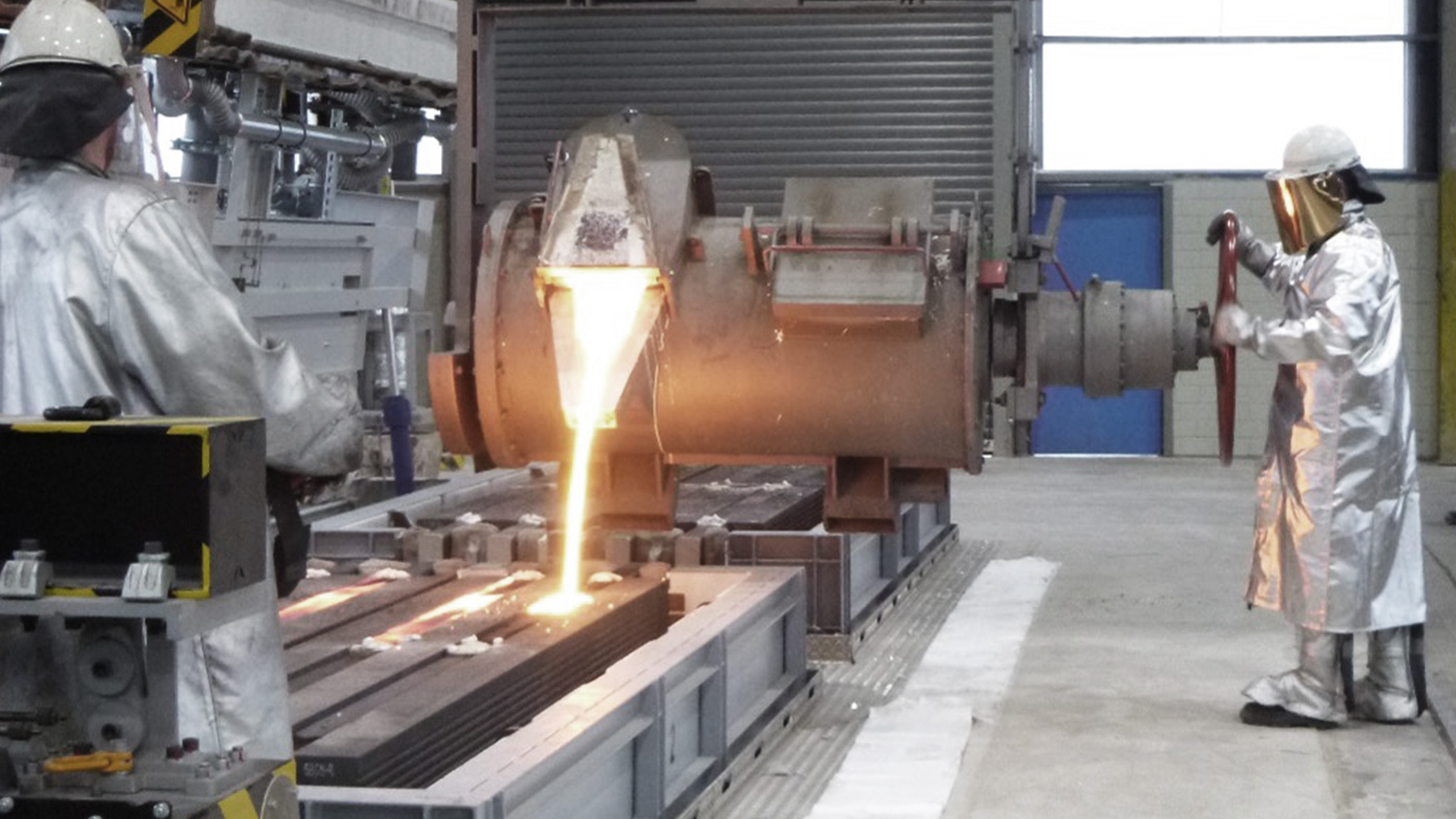TRIMET Aluminium SE has commissioned a new cathode heating unit in the Essen aluminium smelter with four cathode furnaces and connected ladle and mold firing. This customized plant increases energy efficiency and enhances occupational safety. In addition, working steps have been reduced and are more ergonomic.
The new heating unit is the product of four years of planning. Designed to meet local requirements, the plant was initially tested as a prototype. Following 17 weeks of construction and installation, it commenced operation in January 2022 in the cathode repair workshop. Electrolysis cells for aluminium production were relined for this purpose. This involved casting of cathode ingots into cathode blocks using cast iron. Eleven of these blocks form the floor of an electrolysis cell in each case.
“Modernization of cathode treatment marks a further stage in the process of making our production locations fit for the future. We are increasing energy efficiency, lowering CO2 emissions and enhancing occupational safety,” says Dr. Andreas Lützerath, a member of the Executive Board of TRIMET Aluminium SE.
The cathode blocks, which consist of graphite, are heated to about 480 °C in the heating unit to minimize the temperature shock when pouring the 1,450 °C hot cast iron. However, the preheating temperature should not exceed 500 °C to prevent the blocks from igniting. Simultaneously, the cathode ingots placed in should achieve a temperature exceeding 600 °C. This technological challenge is solved by flameless line burners in the new plant that heat the cathode iron from above. Intelligent control of hot combustion gases means that additional undergrate firing can be dispensed with.
Modernization of the cathode heating station at TRIMET in Essen, Germany
The new heating station is the result of intensive planning. The system, which is tailored to on-site requirements, was first tested as a prototype before going into operation in the cathode repair shop in January 2022 after a 17-week construction and assembly period. Here, the electrolytic cells are relined for aluminum production. In the process, the cathode ingots required for current conduction are cast into the cathode blocks using cast iron. Eleven of these blocks then form the bottom of each electrolytic cell. Here is the movie.
